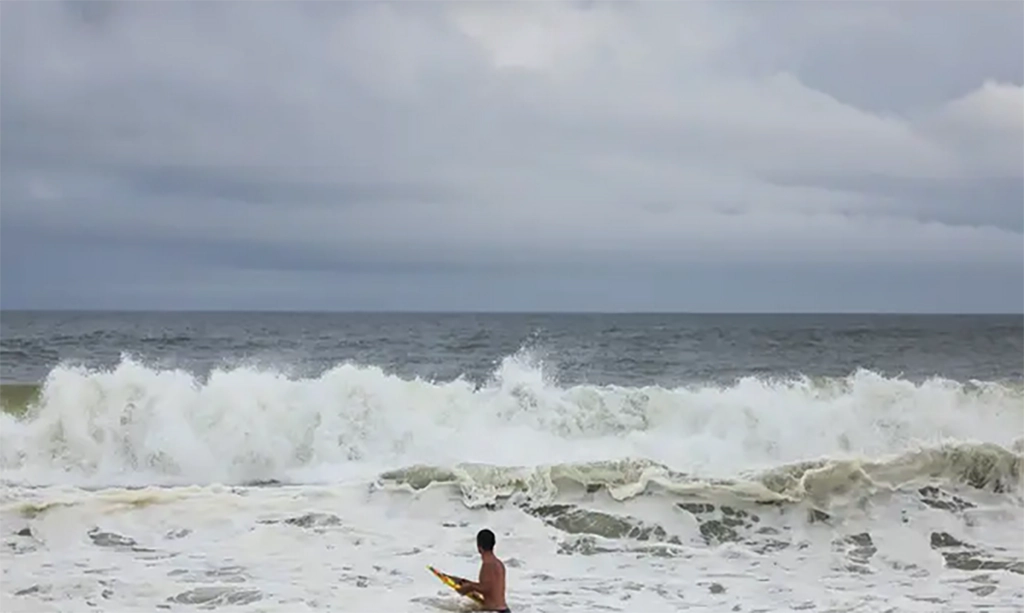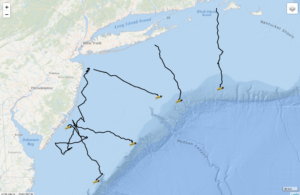Gov. Kathy Hochul suspended swimming at three Long Island state beaches as rough surf and rip tides and flooding as the effects of faraway storms continue to hit the region.
New York City officials also issued a coastal flood advisory and warned that life-threatening rip currents could be present through Thursday. The Parks Department advised against swimming in areas without lifeguards, but an agency spokesperson said late Wednesday afternoon that city beaches would remain open to swimming.
“We are continuing to monitor the forecast and currents, and will take appropriate action as necessary,” NYC Parks senior press officer Dan Kastanis said via email.
But weather officials said they were hopeful the waters will calm in time for Labor Day weekend.
The choppy waves are due to hurricanes Franklin and Idalia — even though neither storm is due to come within 500 miles of New York waterways. Franklin rapidly intensified into a Category 4 hurricane on Monday, as the cyclone churned its way from the tropics into the North Atlantic.
Hurricane Idalia trailed not too far behind, making landfall as a Category 3 on Florida’s panhandle Wednesday morning. It’s due to travel through The South and then exit due east over the Carolinas.
Despite their distance, both storms are creating swell waves — giant rolling masses of water that can travel long distances. Josh Kohut, a Rutgers University professor who studies physical oceanography, said these swells tend to get measured in two ways. First, there is the height or amplitude — the distance between the trough of the wave and its crest. The closer you are to the center of the storm, the higher the waves are going to be.
“The other measure we take is the wave period. That’s how much time it takes to go from one crest to the next crest,” Kohut said.
Swells tend to have longer periods — meaning more time passes before each one hits shore. Kohut said if beachgoers sit in the sand and count 10 seconds or more between the arriving waves, then they are witnessing swells. Smaller waves generated locally by the breeze tend to arrive about five seconds apart.
Full article at Gothamist
Photo credit: Michael M. Santiago/Getty Images




